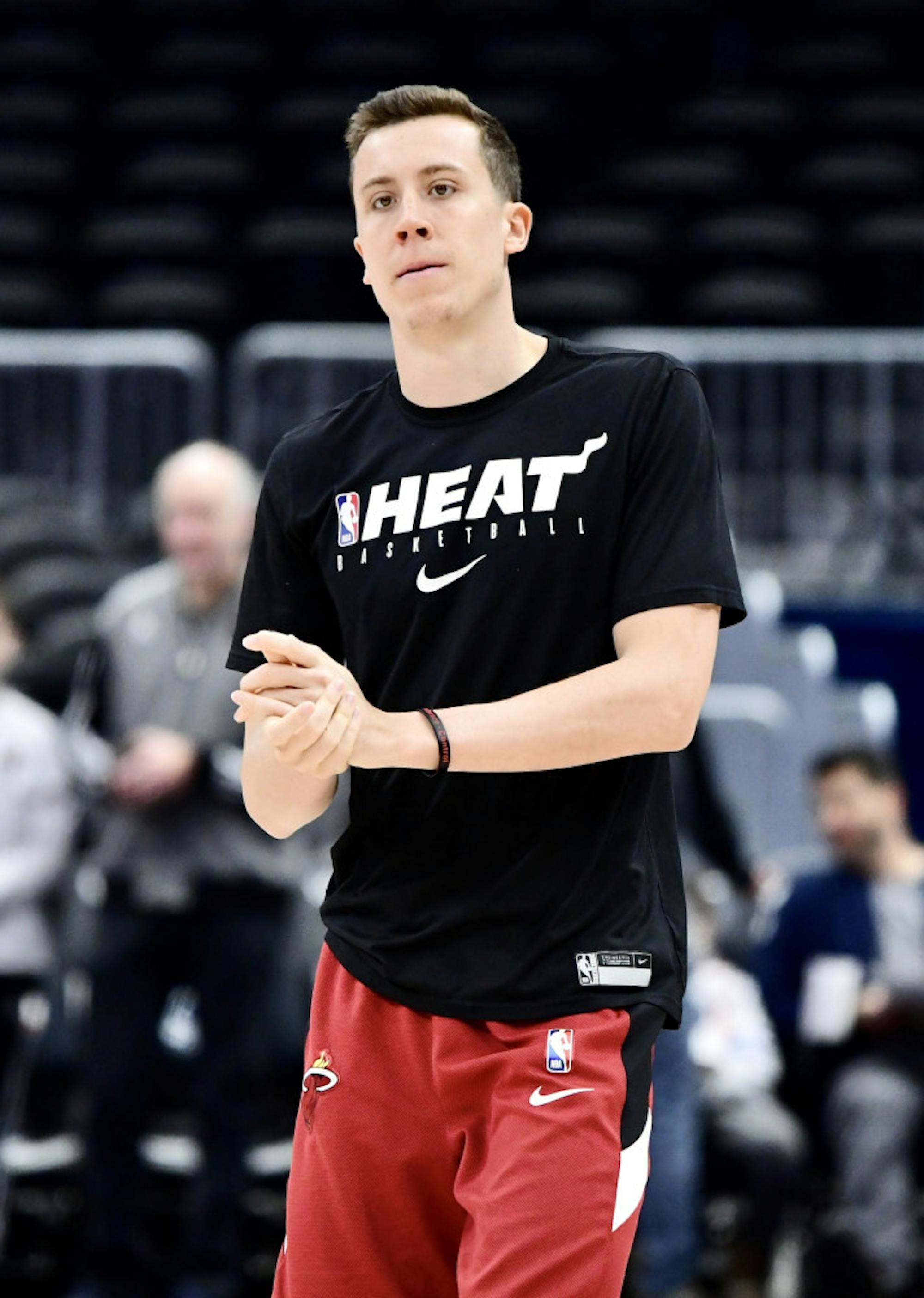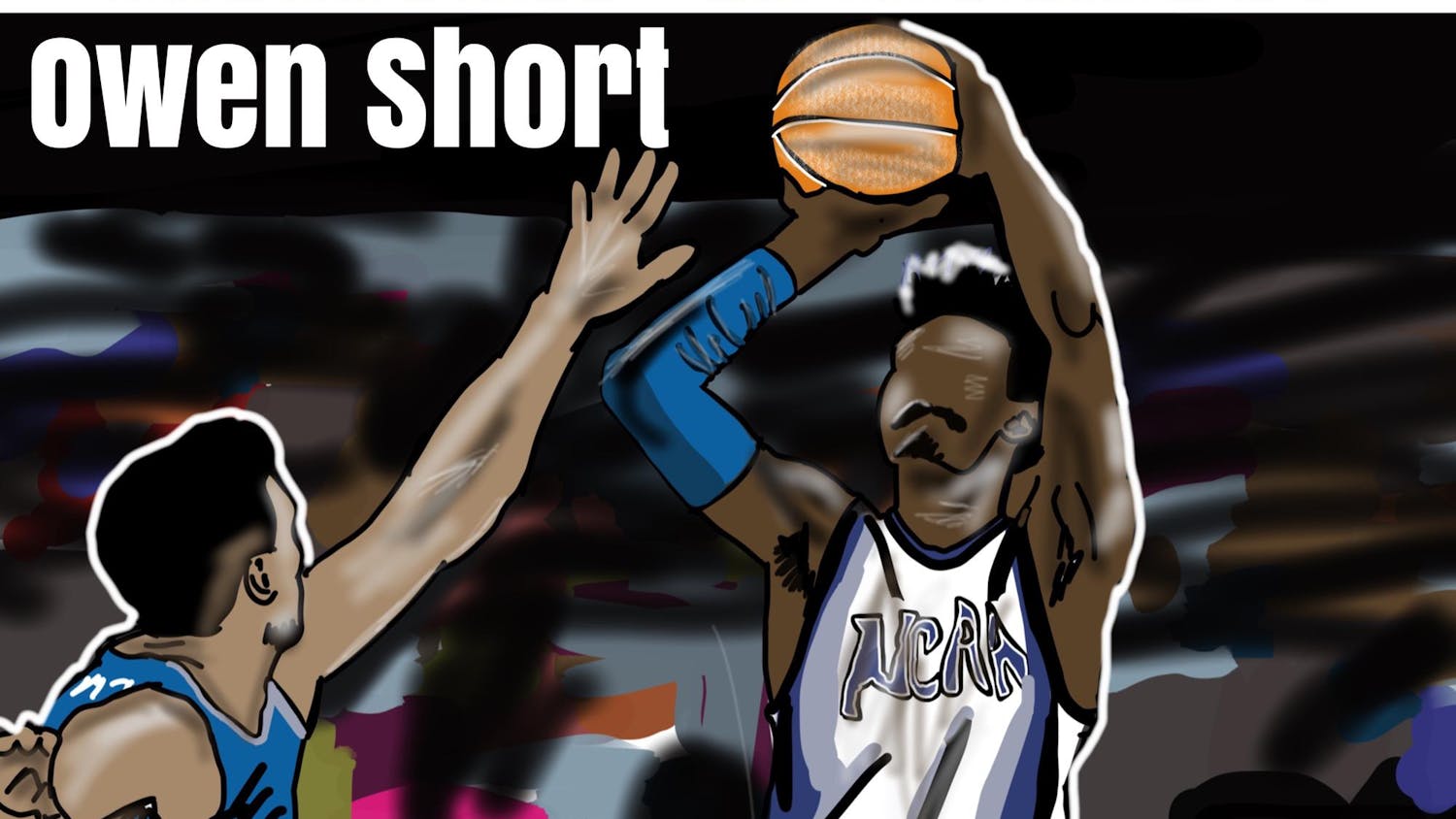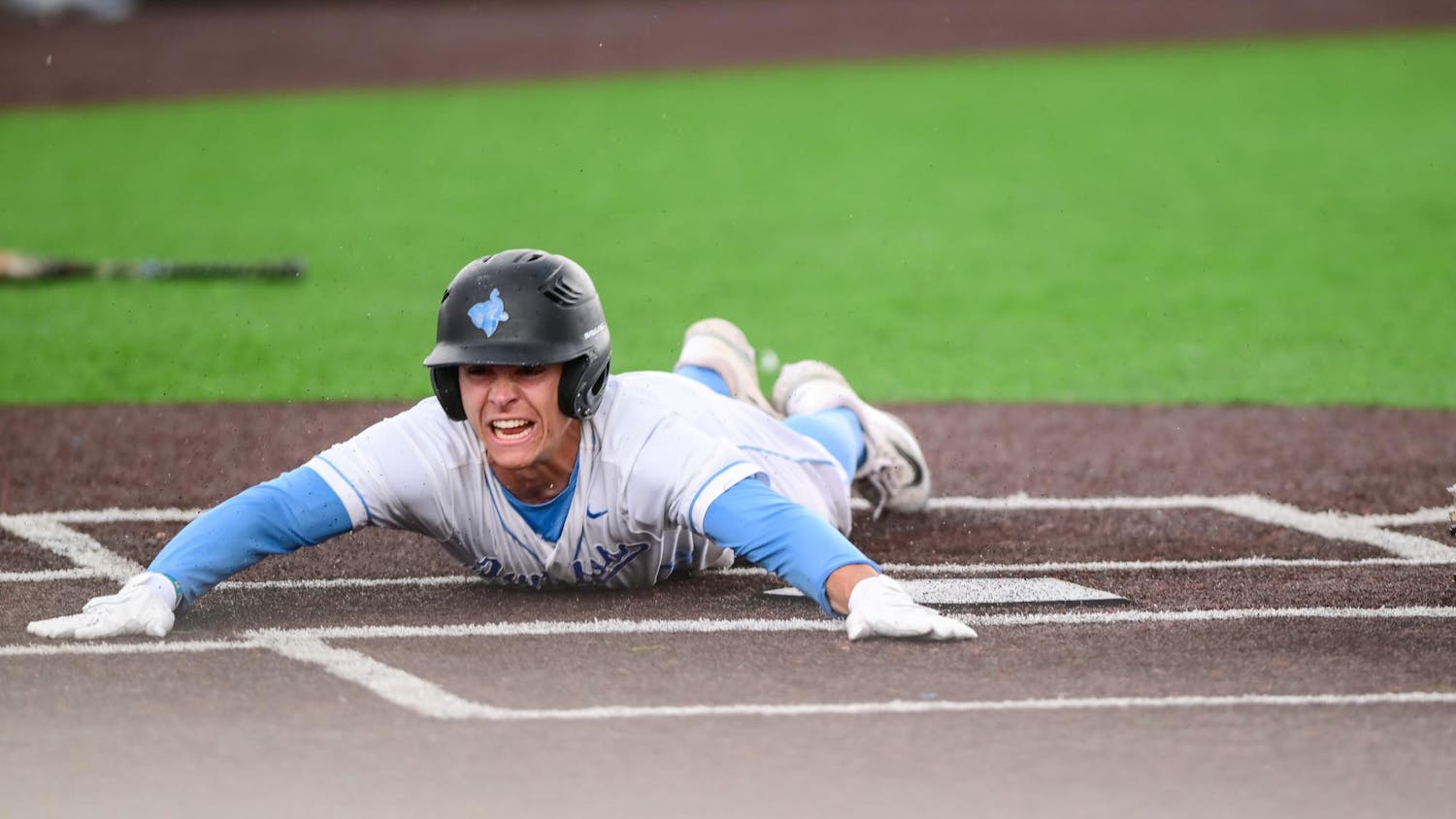Forget the “one-and-done” stereotype so typical when imagining the path talented teenagers take from high school to the NBA. The Eastern Conference semifinals matchup between the Milwaukee Bucks and the Miami Heat should aid in dismissing such conceptions.
Bucks forwardGiannis Antetokounmpo, a lanky teenager at 18 playing in the Greek second division, was plucked with the 15th pick in the 2013 draft, standing at 6 feet, 8 inches. He now stands 6 feet, 11 inches and is the presumable favorite for a second consecutive MVP award.
Heat All-StarJimmy Butler went from homeless in Tomball, Texas to junior college just outside of Dallas. It was only after impressing there did he get a shot at Marquette University, a Big Ten school located in Milwaukee, of all places.
Bucks forward Pat Connaughton and Heat forward Duncan Robinsonwere just one year apart on their local Amateur Athletic Union (AAU) team, the Middlesex Magic. Connaughton, the superior athlete who received numerous Div. I offers in both basketball and baseball, opted to play both sports at the University of Notre Dame after weeks of deliberating between options.
Robinson opted to transfer to Phillips Exeter Academy after graduating high school, still searching for an elusive basketball sponsorship. According to Tufts basketball coach Bob Sheldon, when it didn’t come, he was left with two NESCAC choices in the fall of 2012: Williams or Tufts. Sheldon said that Duncan chose to attend Williams after its coach, Mike Maker, put the squeeze on him to sign.
Six summers later, Connaughton and Robinson would work out together in the Tufts University practice gym with their former AAU coach Michael Crotty, according to Sheldon. Connaughton was a Portland Trail Blazer and Robinson had just graduated from the University of Michigan.
Steve Haladyna (LA'16), a former guard for the Jumbos, is used to playing with and against talented players. At St. John’s Preparatory School in Danvers, Mass., he played alongside Connaughton, winning the 2011 state championship. Along the way, the duo squared off against future All-NBA forward and center Anthony Davis,upsetting his Perspectives Charter School team from Chicago.
He also had the dubious task of guarding Duncan Robinson when Tufts faced Williams in 2014.
“He was 6'6", pretty skinny, no more than 200 pounds,” Haladyna said of Robinson. “He was tall, but they had a lot of talent around him. You want to crowd a shooter like that, not give him any open looks early, have a guy attached to him. I remember the first time we played him we kind of thought of him just as a shooter, and I know he went off against us.”
When Tufts faced Williams at an away game on Feb. 8, 2014, the first-year Robinson had a commanding presence on the court — 25 points on 9–12 shooting to pair with 10 rebounds and six assists. The Jumbos hung with the Ephs through the maiden 15 of the first half, the score sitting at 23–23 with five left to play. Then, Robinson flew off a screen and splashed a shot from behind the arch, plus a foul. Williams went on to run away with the contest 93–70.
“He’s the best shooter I’ve ever played against,” Haladyna said.
Right away, it was clear that the first-year from New England had elite potential. Sheldon, who's held the position for 32 years, reflected on the impact Robinson had on the Ephs.
“It’s not common at all to see first-years like Robinson,” Sheldon said. “You see good freshmen who can play, but not ones who are gonna lead your team. Duncan was their leader, that’s special and does not happen pretty much at all. That’s a chemistry thing, that’s a maturity thing. We’ve had good freshmen in the past, freshmen of the year and all those things, but none of them did what Duncan did.”
The Feb. 8 loss against Williams came in what Tufts coach Bob Sheldon deemed a “transitional year for the program.” That season, the Jumbos were missing the previous year’s NESCAC rookie of the year, Tom Palleschi (LA'17), due to heart surgery. The team finished 13–12, down from a 17–9 finish during the 2012–13 season. The team managed back-to-back victories over Colby and Bowdoin and went into the quarterfinals of the NESCAC tournament, where they once again went face-to-face with Williams.
But Robinson would not be the one to beat them this time.
“We put a bigger guy on him and told him to stay right with him,” Sheldon said. “Whenever he got the ball we were all over him. We knew he was going to make shots but only difficult shots, we didn’t want to give him any open looks. We tried to push him around and get physical with him because we didn’t want to give him any open looks.”
Then-sophomore Haladyna was sometimes tasked with the assignment.
“We have one guy face guard completely, and not give any help defense off of him,” Haladyna said. “Basically in his face at all times to tire him out. That’s the other thing about Duncan is that he moves so well without the ball, you see it now for the Miami Heat. He’s constantly moving on offense.”
The Jumbos hung tough with the 22–3 Ephs, even leading by four with over a minute to play in regulation, but flash forward to 11 seconds on the clock and they found themselves down one at 66–67. Then-senior guard Kwame Firempong (LA'14) was fouled with three seconds remaining and sank one of two from the stripe to send the game into overtime.
“The pressure wasn’t on us, it was on the team that was favored to win the game like they were,” Haladyna said. “We knew as long as the game was close towards the end we would have a chance.”
Entering the overtime session, Sheldon’s scheme held the talented Robinson to just eight points on 3–11 shooting from the field, but his layup with 87 seconds left put Williams up eight and effectively iced Tufts' season.
“We held him to 10 and I’ve actually mentioned that to him several times,” Sheldon said.
This would be Robinson’s lowest tally for the remainder of the season, including a 30 point outburst in the NCAA Div. III semifinals against rivals Amherst.
For the Jumbos, securing a late-season near-victory over the second best team in the nation validated Sheldon’s tactical nous and provided needed momentum to build up for the program.
With the returning Palleschi and fortified by the growth of 2013–14 first-year Hunter Sabety, the Jumbos blossomed during the 2015–16 season. A 23–7 season was capped off with a narrow loss in the NCAA Div. III quarterfinals to rivals Amherst and cemented that the program was back on track to succeed.
For Robinson, the 2015–16 season would mark Robinson’s first in Div. I basketball. According to Sheldon, Williams coach Maker connected with John Beilien, the then coach of Michigan, sending him Robinson’s first-year highlight reel.
“Rumor has it that Beilien watched the tape and called him up on the spot,” Sheldon said. “I think the Div. I people [initially] passed on him a little bit because of his body. When he was at Exeter he was skinny, even when he was at Williams he was thin. I think the best thing he ever did for himself was take that year off and work with his strength coach.”
After red-shirting a year to gain necessary strength to compete at the Div. I level, Robinson became a starter during the 2015–16 Michigan season and never looked back. He was named the Big Ten’s Sixth Man of the Year for the 2017–18 season, a year in which they rode a string of late season form all the way to the national championship game (where they lost to Villanova University).
It also gives Robinson the distinct accomplishment of becoming the only individual to play in both the Div. I and Div. III national championship games.
"It was incredible, I loved the experience,” Robinsonsaid during a press conference regarding his Div. III Final Four experience, prior to his Div. I go-around. “In the moment it’s everything. In the same way that this is everything to us, that was everything to me back then. The level obviously in the national eye is different, but when you put in the hours with your teammates and you practice for 12 months out of the year, it means just the same. Level, that stuff, it doesn’t really matter.”
Undrafted following his senior season, Robinson was scooped up by the Miami Heat and sent to their G-League affiliate, the Sioux Falls Skyforce. He succeeded in Miami’s developmental pipeline that has churned out talents like Hassan Whiteside, Josh Richardson, Tyler Johnson, Rodney McGruder and others into capable rotation players.
Robinson was called up to the NBA team by the end of the 2018–19 season and in doing so, became just the fifth former Div. III player and first NESCAC player in NBA history.
“It’ s a little fluky, but not stupid fluky,” Sheldon said. “There are guys in NESCAC every year who play in Europe. [Former Tufts guard] Vinny Pace (LA'18) played in Malta, their team won, and he was actually MVP of the [championship series], and he made a little bit of money. There are pros coming out of NESCAC, but not NBA [players].”
Just as he always did, Robinson has made his mark in the NBA behind the arch. He shot45% from deep last season in a roll à la Atlanta Hawks’ Kyle Korver, the same percentage he shot as a redshirt sophomore at Michigan.
Robinson making his mark at Williams will have an indelible effect on the future of NESCAC basketball. Sheldon cited a positive uptick in recruiting gained from notoriety of Robinson’s success. NESCAC players are emboldened to seek out Div. I pastures while at a NESCAC school, such as former Tufts center Hunter Sabety (transferred to Hofstra University) and recent Wesleyan point guard Austin Hutcherson (transferred to the University ofIllinois at Urbana-Champaign).
“Guys can see there’s a very high level of talent playing in the NESCAC,” Haladyna said. “A lot of guys that play for us can play for low Div. I colleges in the area, just to come to Tufts and NESCAC schools like Williams, you get the high academics and the high-level basketball play.”
Robinson cited a move to Michigan over other schools due to Michigan’s academics. He’s laid the road-map for Div. III success: Will anyone follow in his footsteps?






